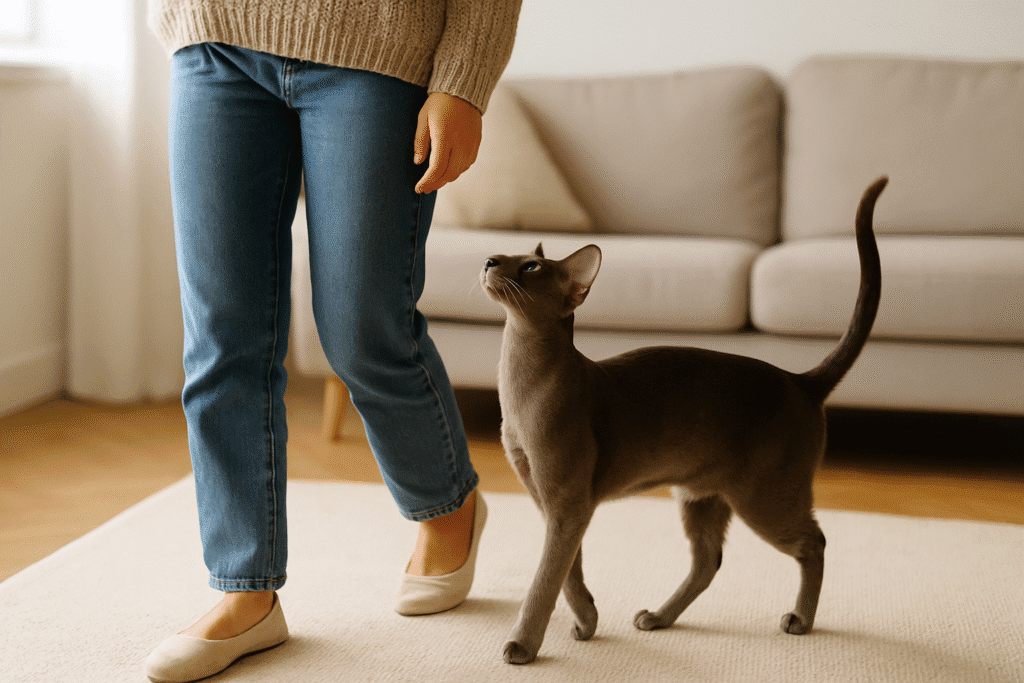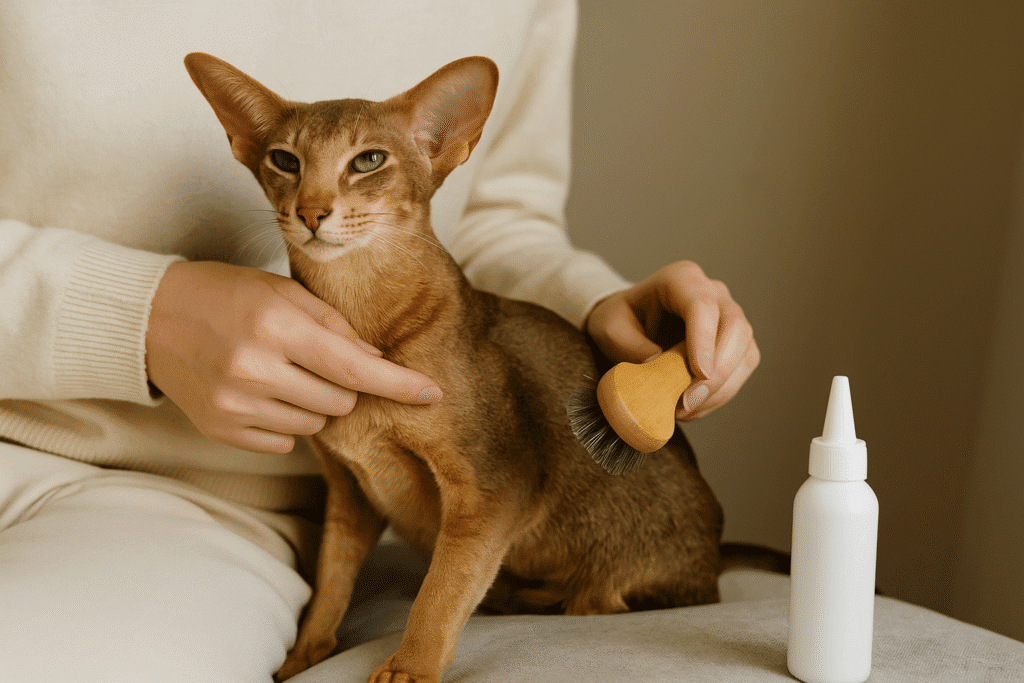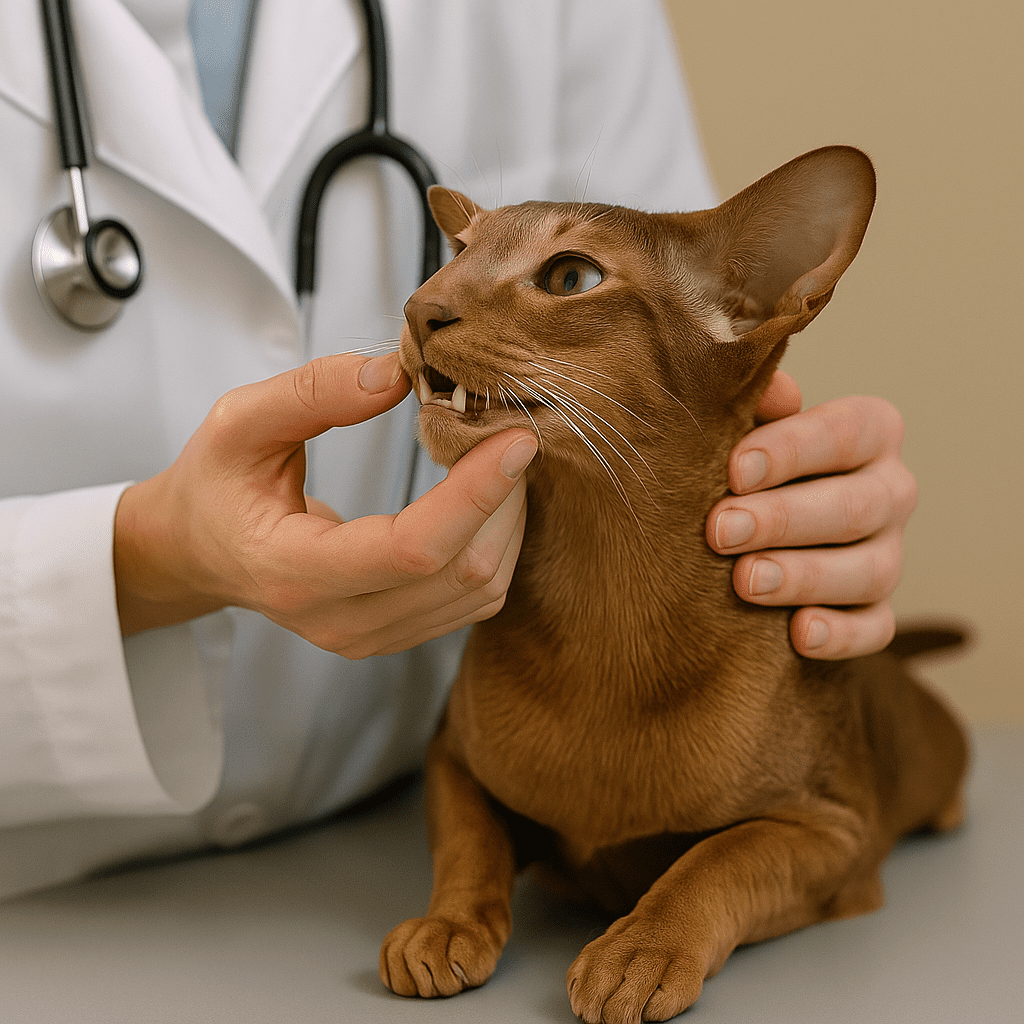This Oriental Shorthair Cat Guide explores the breed’s affectionate personality, low-maintenance grooming needs, and important health considerations. Learn why this intelligent, people-oriented cat makes a lively companion and what you need to know before bringing one into your home.
Introduction
The Oriental Shorthair Cat Guide is for cat lovers looking to understand one of the most distinctive breeds in the feline world. Known for their elegant bodies, large ears, and playful personalities, Oriental Shorthairs are closely related to Siamese cats but come in a wide variety of coat colors and patterns. Let’s dive into their personality, grooming requirements, and health insights to see if this breed suits your home.

(Outbound link: Learn more about breed background at CFA: Oriental Cat Breed Profile.)
Breed Overview
- Origin: Developed from Siamese lines in the mid-20th century
- Size: Medium, weighing 6–12 pounds
- Coat: Short, sleek, and fine-textured
- Lifespan: 12–15 years, sometimes longer with good care
Personality and Temperament
Oriental Shorthairs are affectionate, social, and thrive in households where they receive plenty of attention. They form deep bonds with their families and dislike being left alone for long periods.
Key Personality Traits
- Affectionate: Known to follow owners around and “talk” with their voices.
- Playful: Retain kitten-like energy well into adulthood.
- Intelligent: Learn tricks quickly and enjoy interactive toys.
- Social: Often do well with other cats and even dogs.
(Internal link: Compare personality with our Siamese Cat Guide.)
Grooming Needs
The Oriental Shorthair’s short, fine coat makes grooming simple. Weekly brushing is enough to remove loose hairs and keep the coat shiny. Their ears, however, are large and may need regular cleaning to prevent wax buildup.
Grooming Checklist
- Weekly brushing with a soft brush
- Ear cleaning once or twice a month
- Regular nail trimming
- Dental care for healthy gums and teeth

(Outbound link: Find grooming basics at International Cat Care: Grooming Your Cat.)
Health Insights
While generally healthy, Oriental Shorthairs may inherit conditions from their Siamese lineage.
Common Health Concerns
- Respiratory issues: Due to their head shape, some may experience nasal problems.
- Dental disease: Routine dental care is essential.
- Progressive retinal atrophy: An inherited eye disorder that may lead to vision loss.
- Heart conditions: Some may be prone to hypertrophic cardiomyopathy (HCM).

(Internal link: For more details on feline dental health, see our Pet Dental Care Guide.)
Diet and Nutrition
A high-quality cat food with balanced protein, fats, and essential nutrients supports their energy levels. Oriental Shorthairs are active, so they require a diet that matches their activity to prevent weight gain.
(Outbound link: For balanced feline nutrition basics, visit Cornell Feline Health Center: Feeding Your Cat.)
Living with an Oriental Shorthair
These cats are not suited for owners who want a quiet, low-maintenance pet. They thrive in homes where they can be involved in daily life, interact with people, and stay mentally stimulated. Without attention, they may become vocal or mischievous.
Is the Oriental Shorthair Right for You?
- Choose this breed if you want a highly social, affectionate cat that will be part of every aspect of your life.
- Not ideal for people who are away from home for long hours or prefer a quiet companion.
Frequently Asked Questions (FAQ)
- Are Oriental Shorthairs good with children?
Yes, they are playful and affectionate, making them excellent family pets. - Do they shed a lot?
Not excessively. Weekly brushing is usually enough to manage shedding. - How vocal are they?
Quite vocal, similar to Siamese cats, and enjoy “conversations” with their owners. - Do they need companions?
They do well with other cats or dogs since they dislike being alone. - What is their average lifespan?
They often live 12–15 years, sometimes longer with proper care.
Conclusion
The Oriental Shorthair Cat Guide shows why this breed is beloved for its playful nature, intelligence, and strong bond with humans. While their grooming needs are minimal, they require significant social interaction and attention. If you’re ready for a lively, affectionate feline, this breed could be the perfect match.
Call to Action
Want to explore more feline personalities? See our Cat Breeds collection here.

